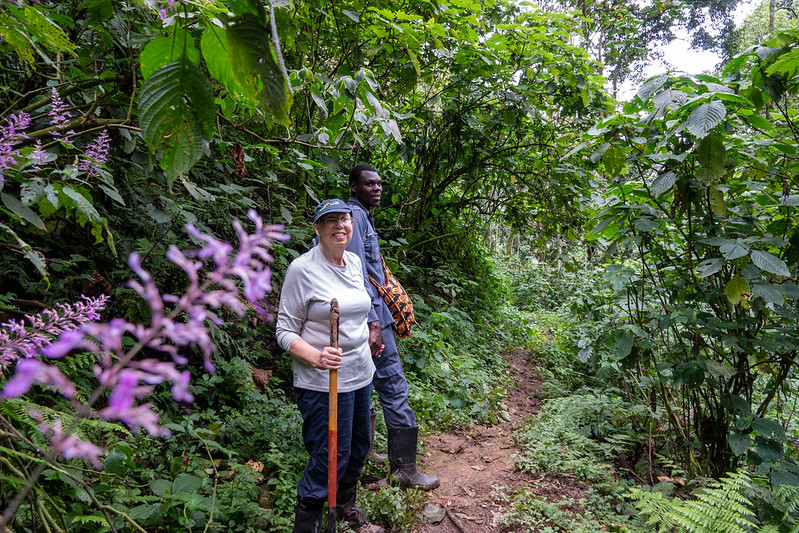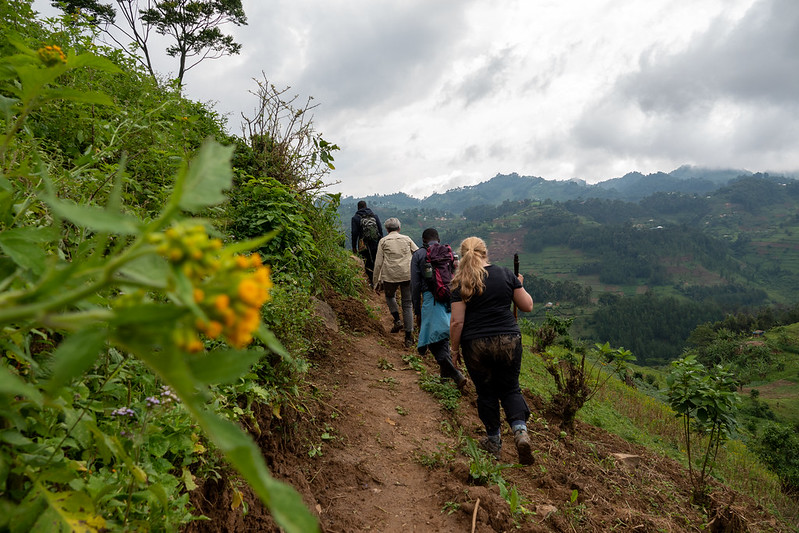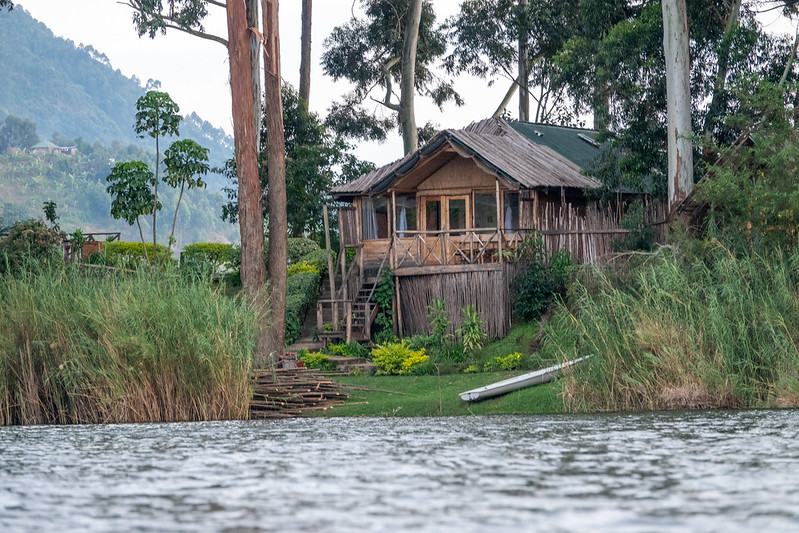Africa’s gorillas and chimpanzees have captivated wildlife lovers from across the globe since the early 1900s. Since then, travellers have flocked to the region for the once-in-a-lifetime opportunity to be in the presence of our closest animal ancestors.a
Gorillas and chimps: A history of trekking
Africa’s gorillas and chimpanzees have captivated wildlife lovers from across the globe since the early 1900s. Since then, travellers have flocked to the region for the once-in-a-lifetime opportunity to be in the presence of our closest animal ancestors.
The history of gorilla & chimp trekking dates back to the early 1900’s, with the establishment of Virunga National Park, Africa’s first national park. Little knowledge remains of these mysterious creatures throughout the majority of the early 1900’s, until Dian Fossey and Jane Goodall opened our eyes to our closest relatives. Today, gorilla and chimp trekking plays a large role in Africa’s tourist industry and the success of the local economy. Tourism has also been a major driver behind the conservation of these unique creatures. Learn more by reading our blog: History of gorilla trekking.

Read our blogs about gorilla and gorilla trekking and the best places to see gorillas in the wild for more information.Read our blogs about gorilla and gorilla trekking and the best places to see gorillas in the wild for more information
About gorillas and gorilla trekking
Gorillas can be categorised into two subspecies - mountain gorillas and eastern lowland gorillas. With only about 1,000 mountain gorillas left in the wild, these elusive animals attract thousands of visitors to national parks across the continent every year, and tourism plays a vital role in their conservation. Learn m
Mountain gorillas can only be found in Rwanda, Uganda and the Democratic Republic of Congo (DRC). The best gorilla trekking experiences are found in Uganda's Bwindi Impenetrable Forest where the gorilla permits are currently half the price of trekking with gorillas in Rwanda. Gorilla trekking in Bwindi is quite challenging, usually involving a 4 - 6 hour trek up very steep terrain. If you aren't as fit, are a little older or struggle in challening terrain, you may want to look at trekking with gorillas in Mgahinga Gorilla National Park (Uganda) or in Volcanoes National Park (Rwanda). Due to safety issues, few trek with gorillas in the DRC. Read our blog: best places to see gorillas in the wild or best places to see chimps in the wild for more information.
About chimps and chimp trekking
Chimpanzees are the closest relatives of humans in the animal kingdom, sharing 98.7% of our DNA. Jane Goodall’s groundbreaking research in the 1960s led to the establishment of an early research facility, the Gombe Stream Research Center in Tanzania, which is open to the public today and is our favourite place to trek with chimps.
Chimp populations are widespread across the middle of Africa from Senegal in the west to Tanzania & Uganda in the east. The best chimp trekking experiences are found in Tanzania, Uganda & Rwanda (also available in the Democratic Republic of Congo but less popular due to safety issues). The chimp experience in each country is unique and we love them all. Our favourite chimp trekking is in Tanzania. Gombe is very remote and off the beaten track and is iconic as the first park in Africa specifically created for chimps. Uganda on the other hand is our prefered destination if you want a combined chimp and gorilla trekking experience. Read our blog about chimpanzees and chimpanzee trekking for more information. Read our blog: Best places to see chimps in the wild for more information.
Gorillas vs chimps: Which trek is right for you?
Gorilla trekking and chimp trekking are unique bucket list wildlife encounters, and we believe it’s worth factoring both experiences into your itinerary if you have the time and money.
If you do decide to trek with both gorillas and chimps, Uganda is the primate capital in the world, with 20 primate species. Gorillas live in two separate populations in Uganda’s mountain forests (Bwindi Impenetrable Forest & Mgahinga Gorilla National Park), while chimps can be found in a number of Ugandan forests - Kibale, Budongo, Kalinzu, Kyambura Gorge and Semuliki Forests. You can also find a number of other rare and fascinating primates while visiting Uganda, like golden monkeys, red colobus, bushbabies and red-tailed monkey. If seeing as many primates as possible is your goal, Uganda is definitely the country to visit!
If you need to decide between a gorilla or chimp trek, it’s important to consider price, reasons for doing the trek and what experience do you want, time of year and the time required for the gorilla or chimp experience. If you are on a budget or you want to avoid the crowds, chimps is likely a better option (particulary at Gombe). If you want the "wow moment" to share on Instagram, a giant gorilla will probably get you more likes. The choice is very personal and either way, you are going to have an unforgettable experience, but if you are really stuck, read our blog What's better - gorilla or chimp trekking?
.jpg)
Fo
r a breakdown on these topics and handy hints to help you decide which trek is the right one for you, check out our blog, What’s better - gorilla or chimp trekking?
Planning your trek
Planning a once-in-a-lifetime experience like a gorilla or chimp trek can be a daunting task, but we have your back! A great tour operator can help you get the most out of your trek and take the pressure off by organising the finer details, but there is some information you should be armed with when chatting to your guide about your itinerary. For example, you should decide which country you’d like to do your trek in - and this might be a tough decision! Gorilla treks are offered in Rwanda, Uganda and the Democratic Republic of Congo (DRC), while chimp treks are available in Tanzania, Rwanda, Uganda and the DRC.
You should also think about how long you would like your trek to be, especially if you have other travel objectives on your Africa trip. If you’re planning a gorilla or chimp trek on its own, we recommend allowing three to five days, and at least four to six days to do both treks. Unfotunately, gorillas and chimps are in very remote areas, making it is hard to visit in less than three days without a huge budget and a private helicopter.
Most importantly, think about what kind of tour operator you’d like to book your trip with. Consider sustainable tourism, navigating cultural challenges and budget-friendly operators. Our guide on how to plan your gorilla or chimp trek is a great place to start!
Our favourite country for gorilla trekking is Uganda, as it is a safe country with more affordable national park permits. To help you decide where you should trek with gorillas, we’ve put together a summary of each of the best places to see gorillas in the wild.
For chimp trekking, we love Tanzania. Gombe is very remote and off the beaten track and is iconic as the first park in Africa specifically created for chimps. Add the charm of only being accessible by boat, and the likelihood that you may be the only tourist there, Gombe offers an unforgettable chimp trekking experience. Uganda on the other hand is our prefered destination if you want a combined chimp and gorilla trekking experience. To help you decide where you should trek with chimps, we’ve put together a summary of the best places to see chimps in the wild.

Best time of year for a gorilla or chimp trek
While gorillas and chimps can be sighted year-round, there are certain times of the year that are best for trekking due to weather. We recommend trekking during the dry season from December to March and June to October, when drier trails will make your trek easier. If you can trek between December and March, you will be able to avoid the huge crowds that flock to the continent midyear, while still enjoying fine weather. Remember, if you’re planning to trek between June and September, you’ll need to book well in advance!
For more, see our blog, best time of year for a gorilla or chimp trek.=
Where to stay
At the end of a rewarding day of trekking, it feels great to enjoy a hot shower, comfortable bed, good meal and a bottle of wine, and getting the right accommodation for your gorilla or chimp trek can make or break your experience.
There are a range of accommodation options that work for all budget levels at all gorilla and chimp trekking destinations, starting from USD$100 per person per night, right up to USD$10,000, depending on how much luxury you’d like to enjoy. When deciding on your accommodation, think about the amenities you’d like to enjoy, whether food is included, and proximity to the start of your trek. Check out our breakdown of the best places to stay on your gorilla trek or on your chimp trek by budget. Offering budget, mid-range and luxury options, this guide will also help you find the right accommodation that won’t break the bank.

Things you need to know
Gorilla and chimp trekking is safe, but you are still in a wild environment with animals that can be unpredictable, so it’s important to follow the advice of your guides and rangers at all times. Learn more about wildlife etiquette in our blog, things you need to know about trekking with gorillas and chimps.
We know that female travellers sometimes have a lot more to think about, when it comes to safety, hygiene and even cultural nuances. We can guide you through all of these challenges and help take a bit of the pressure off. Read our ultimate woman’s guide to gorilla and chimp trekking.
It’s also good to think about safety considerations in the country you’re visiting, particularly if you’re going off the beaten track in the DRC. The Australian Government’s Smart Traveller website is a great place to get the latest travel information. You can also learn more about safety in our how safe is it to visit East Africa blog and here is a guide to safety considerations that are specific to gorilla and chimp trekking.
What to pack and wear
Great gear including comfortable and appropriate clothing and footwear, a good pack and the right water bottle can really make your trip. That’s why we’ve put together a comprehensive packing guide for gorillas and chimps. The most important things are comfortable, waterproof hiking boots, long hiking pants and a long-sleeve hiking shirt. We also have a great network of gear suppliers who offer discounts to Adventure Out Loud clients, so make sure you ask us about how you can score some good-quality gear for less than retail price!
Things to do before or after your gorilla or chimp trek
No matter which country you choose for your gorilla or chimp trek, you will have an array of other amazing experiences to add to your itinerary before or after your trek. You may wish to go whitewater rafting down the Nile River in Uganda, trek the spectacular Mt Nyiragongo volcano in the DRC, or visit the Genocide Museum and try some of Africa's best fine dining in Rwanda. Alternatively, Tanzania is home to Africa's best safari parks, Mt Kilimanjaro, giant whale sharks and Africa's best beaches (Zanzibar). Book a free consultation with one of our African experts. or read our blog the best things to do before and after your gorilla and chimp trek for a full breakdown of adventurous ideas.
Gorilla or chimp trekking with kids
For your child's safety, gorilla and chimp treks have an age limit of 15 years. Gorillas and chimps are usually very calm and gentle, and they are habituated (familiar with) humans. In rare circumstances, when they feel threatened or misinterpret the actions of trackers, gorillas and chimps can become aggressive. When this happens, children are less likely to stay calm and are at a higher risk of being attacked.
There are plenty of amazing wildlife encounters that you can experience with younger children in East Africa, safari being at the top of the list. We are also happy to organise a babysitter or an alternative activity for your children while you trek with the gorillas or chimps. For more information visit our guide to gorilla or chimp trekking with kids.
So, now that you’re ready, go ahead and venture out into the wilderness to meet our closest primate relatives!
Gorilla & chimp itinerary ideas